Dyslexia Therapy and Colour Vision
Dyslexia is defined as a difficulty with reading and or writing. Symptoms include blurred vision when reading, missing a line or skipping words, feeling that the words move around on the page, there may also be problems with writing. Although an optometrist cannot diagnose dyslexia (this needs to be done by an educational psychologist) we may be able to help treat some of the symptoms.
When attending for a dyslexia assessment the first thing to do is to make sure that there is no uncorrected prescription that may be affecting the ability to read. In a child drops may need to be used to measure the correct prescription.
 Cyclopentolate drops may be used when measuring childrens prescription
Cyclopentolate drops may be used when measuring childrens prescription
The movements of the eyes together will be assessed to make sure that both eyes are working together and there is no strabismus (or squint, this is when one eye turns in or turns out) or any eye muscle weakness.
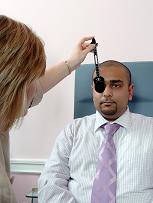 The covertest to measure strabismus
The covertest to measure strabismus
Sometimes the eyes have difficulty holding together when looking at text and a very small amount of what is called Fixation Disparity can lead to uncomfortable reading and headaches. This will be measured using the Mallet Unit.
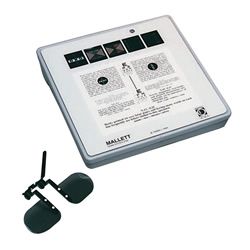 The Mallet Unit measures investigates fixation disparity, binocular instability and supression
The Mallet Unit measures investigates fixation disparity, binocular instability and supression
The ability to accommodate on near targets will also be measured, as will the ability of the eyes to converge when things come near. Problems with this can lead to blurred vision when reading.
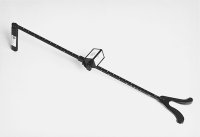 The RAF rule measures near point of convergence and accommodation
The RAF rule measures near point of convergence and accommodation
It is also important to have a look at the health of the eyes to ensure there is no pathology affecting the vision.
It is thought that a good proportion of those diagnosed with dyslexia may benefit from using coloured overlays, tinted spectacles or special tinted contact lenses called Chromagen lenses. This is called Meares-Irlen syndrome or Visual Stress. In this syndrome it is thought that the black writing on bright white paper over-stimulates the visual area of the brain leading to what is called 'pattern glare' which is a bit like looking at someone with a very stripy jumper. Using a coloured tint reduces the pattern glare and makes reading easier.
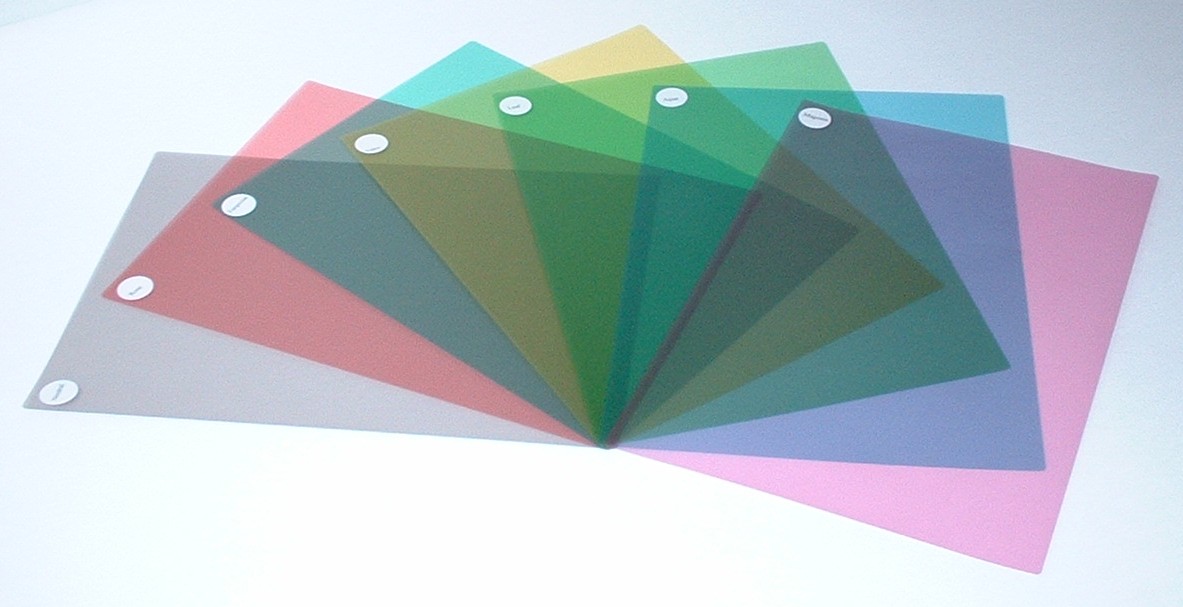
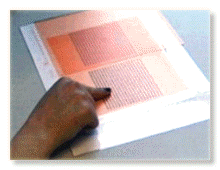 Coloured overlays can be used over text to reduce pattern glare
Coloured overlays can be used over text to reduce pattern glare
If a coloured overlay improves reading vision then we will assess the tint needed for glasses or contact lenses using the Intuitive Colorimeter, invented by Professor Arnold Wilkins, as the tint needed for glasses will not be the same as the overlay due to its proximity to the eye.
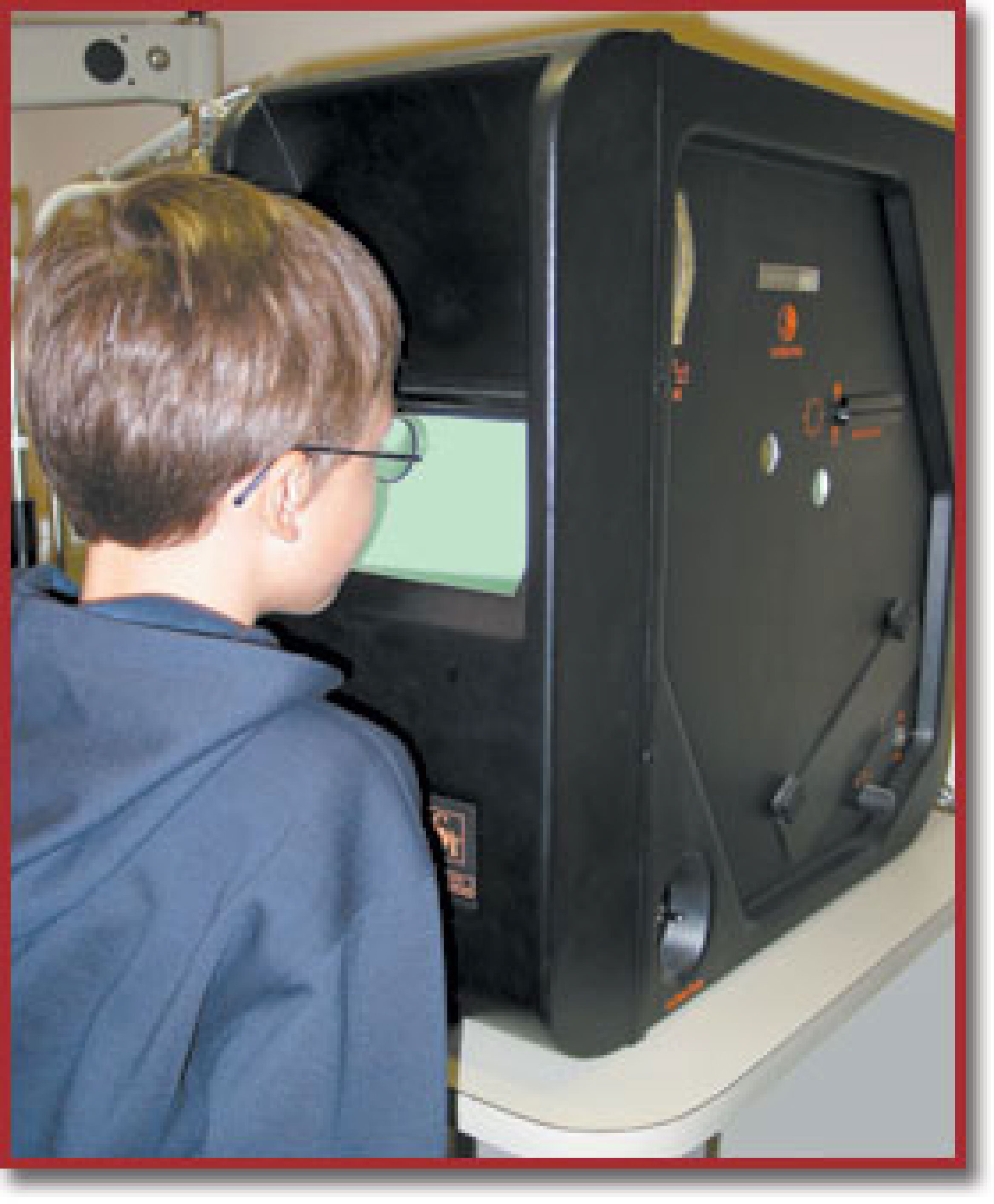 The Wilkins colorimeter is used to measure the correct tint for lenses
The Wilkins colorimeter is used to measure the correct tint for lenses
Meares-Irlen syndrome may also lead to migraines that can be helped with tinted lenses.
For colour defectives it is possible to wear a specially tinted soft lens in one eye only.
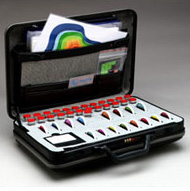 The Chromagen Lens diagnostic fitting set
The Chromagen Lens diagnostic fitting set
Alternatively, the tint can be incorporated into special mirrored spectacles either to prescription or as a clip-on. The visual improvement in colour perception and recognition generally by colour defectives can be quite spectacular.
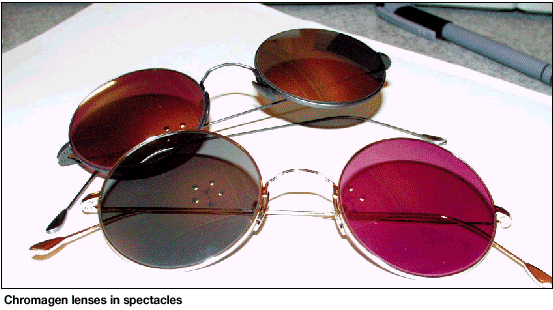
An hour-long assessment appointment is needed (£ 170) with Mr Burnett Hodd or Dr Caroline Burnett Hodd and you may be asked to use a coloured contact lens or an overlay for an hour or two to see the effect and decide whether to go further.
Mr Burnett Hodd has published two articles in Optometry Today about Chromagen Lenses:
The Chromagen method for colour deficiency and specific learning difficulties
